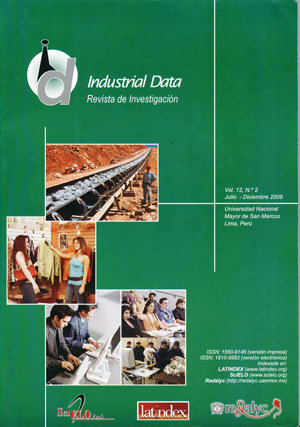Determining factors in the enterprising capacity of the students of the Universidad Nacional Mayor de San Marcos
DOI:
https://doi.org/10.15381/idata.v12i2.6109Keywords:
Entrepreneur, capacity venture, young entrepreneursAbstract
In the context of globalization the need to innovate, create wealth and develop the creative potential of human resources is emphasizing the development of entrepreneurship. The purpose of this investigation was to determine the possible factors that explain the abilities of students from San Marcos University and thus help in the formulation of guidelines to enable the University to develop educational and training bases to promote an enterprise culture of their students. Previous research had established three factors to explain entrepreneurship in university students, drawing primarily on this background and in the interaction of the multidisciplinary team that conducted the research, discussed the need to include a fourth factor, all based on the principles of psychometrics. The results indicate four factors that explain the abilities of young entrants to the UNMSM: ability to relate socially, creativity, capacity planning and realization. The fourth factor considered was that of creativity.
Downloads
Downloads
Published
Issue
Section
License
Copyright (c) 2009 Daniel Mavila Hinojoza, Óscar Tinoco Gómez, César Campos Contreras

This work is licensed under a Creative Commons Attribution-NonCommercial-ShareAlike 4.0 International License.
AUTHORS RETAIN THEIR RIGHTS:
a. Authors retain their trade mark rights and patent, and also on any process or procedure described in the article.
b. Authors retain their right to share, copy, distribute, perform and publicly communicate their article (eg, to place their article in an institutional repository or publish it in a book), with an acknowledgment of its initial publication in the INDUSTRIAL DATA.
c. Authors retain theirs right to make a subsequent publication of their work, to use the article or any part thereof (eg a compilation of his papers, lecture notes, thesis, or a book), always indicating the source of publication (the originator of the work, journal, volume, number and date).






